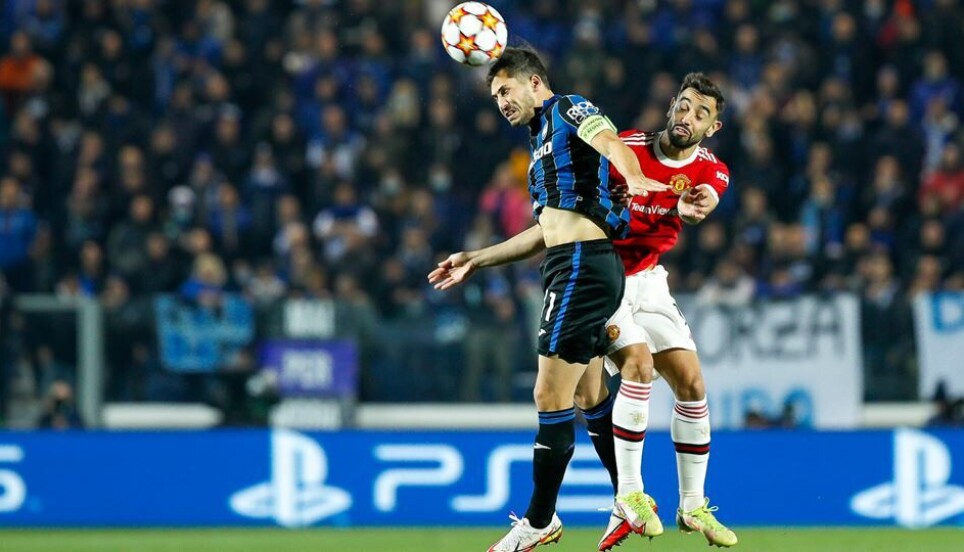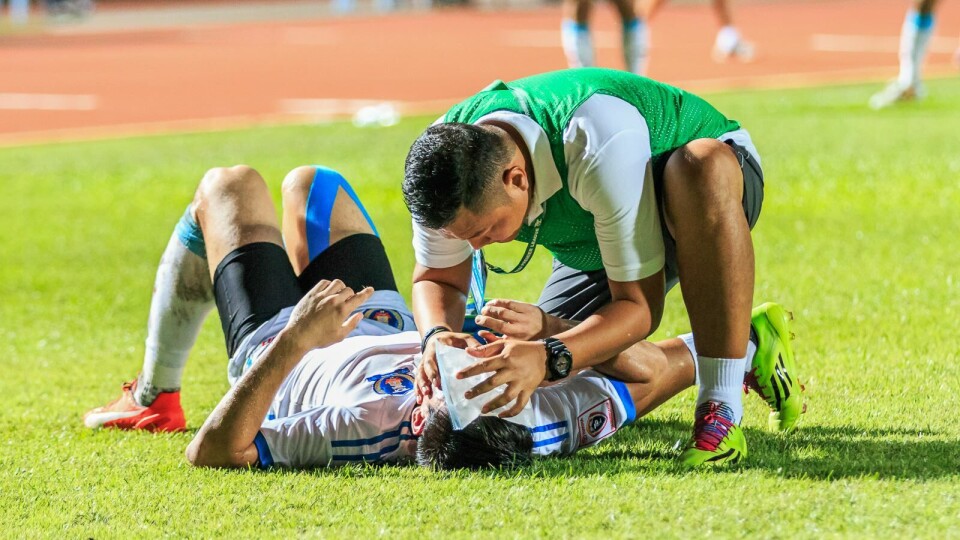THIS ARTICLE/PRESS RELEASE IS PAID FOR AND PRESENTED BY The Norwegian School of Sport Sciences - read more

Looking for a method to detect football head injuries
Football is a risky sport. A new study could enable the immediate detection of head injuries, on the sidelines of the football pitch.
You've seen it countless times: a footballer jumping into the air and elegantly heading the ball up or down the pitch. However, such headbutting, or heading, involves a blow to the head and it is this type of impact that is gaining an increasing amount of attention. A number of football veterans have reported long-term conditions as a result of head injuries. These injuries could have been caused by repeated concussions, but potentially also from heading.
Able to detect head injuries on the sidelines

There is little doubt that the brain is affected, but how dangerous is each header? And each concussion?
And how can we detect any injuries to the brain?
"The dream is to find a method that could detect head injuries immediately, on site. Maybe this could be done with something as simple as a blood or saliva sample," says Stian Bahr Sandmo.
He has been conducting research on head injuries at the Centre for Sports Trauma Research at the NIH for several years and he completed his PhD on this very subject in 2020. He now specialises as a doctor at Oslo University Hospital (OUS) in Ullevål.
Serious injuries
In his PhD, he tried to ascertain how harmful heading and concussions actually are. This turned out to be more difficult than one might think, although it is well known that just one sufficiently strong blow to the head can affect and possibly damage the brain and its functions. Lighter, repeated blows to the head can also be harmful. This is because the harmful effects accumulate. In other words: the more and the harder the blows that occur over time, the greater the damage.
People who develop such injuries, which can be compounded by heading and concussions, typically report having prolonged headaches, dizziness and difficulty in concentrating. Such injuries are also linked to dementia disorders such as Alzheimer's, Parkinson's and CTE.

Right down to molecular level
The key to this new method for detecting head injuries, the one that Sandmo dreams of, lies in complicated biochemistry. In a new study that has just been published in the journal Brain Injury, Dr. Sandmo and his colleagues have found biochemical changes in the brain after both heading and concussions.
"One of the interesting things about the study is that we can actually measure how heading seems to affect the brain in a specific way that differs from concussions where there are greater acceleration forces at work," says Stian Bahr Sandmo.
However, this probably requires a bit more explanation.
MicroRNAis a type of signalling molecule found around the body. They help to control communication between cells in the body, including the brain cells. "They regulate how genes are expressed and thus help to control activity in the cells, so they are important," explains Stian Bahr Sandmo. "And what we are seeing is that microRNA levels in the blood are respectively different after heading and concussions.
Can detect the degree of seriousness
In the study, the researchers examined microRNA levels in blood samples taken from a large group of professional Norwegian football players. And changes in the amount of some specific types of microRNAs in the blood indicated changes in the brain, caused by heading and concussions.”
The Premier League players were observed over the course of two seasons and were examined to determine if they suffered a head injury. They were also tested after training sessions which involved repeated heading exercises and after high-intensity training without head contact. The latter was important for checking to see if the level changes might only have occurred as a result of training.
While several microRNAs changed in different ways after heading and head injuries, there were no changes in the same microRNAs in those who did not do any headers.
"In this way, the amount of the tell-tale microRNAs can tell us something about the type and severity of a head injury," Dr. Sandmo sums up.

Play on or not
And in the future, he believes that a simple test carried out on players – for example, after a serious blow to the head on the football pitch – could indicate whether or not the player in question should be allowed to play on or not.
And it really can be that simple. During the study they measured microRNA in blood samples, but since the molecules are found everywhere in the body it also possible to use saliva in principle.
"But this is something that still lies in the future. The measurement techniques need to be refined and the test results need to be double-checked in new studies. In other words: there is still a lot of work to be done.”
Already trying to protect players
Meanwhile, an increasing amount of attention is being paid to the possible harmful effects of heading and concussions in football. A Scottish study contributed to this; it showed a link between professional football and an increased risk of developing dementia.
"This topic is being debated to an increasing extent in the football world, at all levels.”
In late 2019, the English Football Association issued new rules for heading in children's and youth football. And now, as recently as February, new rules on so-called 'concussion substitutes' were introduced to include substituting an extra player in cases of suspected head injuries.
“Otherwise with the standard rules, which specify having a maximum of three substitutions during a match, there is a risk that players have been 'forced' to play on. So, yes, it's being taken seriously.”
References:
Stian Bahr Sandmo: Repetitive head impacts in football. Quantifying exposure and assessing outcomes (pdf). Doktoravhandling ved UiO, 2020.
Stian Bahr Sandmo et al.: Changes in circulating microRNAs following head impacts in soccer. Brain Injury, 2022. Doi.org/10.1080/02699052.2022.2034042
Daniel F. Mackay et al.: Neurodegenerative Disease Mortality among Former Professional Soccer Players. The New England Journal of Medicine, 2019. DOI: 10.1056/NEJMoa1908483.
See more content from The Norwegian School of Sport Sciences:
-
Football expert wants to change how people watch football at home
-
Kristine suffered permanent brain damage at 22: "Life can still be good even if you don’t fully recover"
-
Para sports: "The sports community was my absolute saving grace"
-
Cancer survivor Monica trained for five months: The results are remarkable
-
What you should know about the syndrome affecting many young athletes
-
New findings on how athletes make the best decisions





































